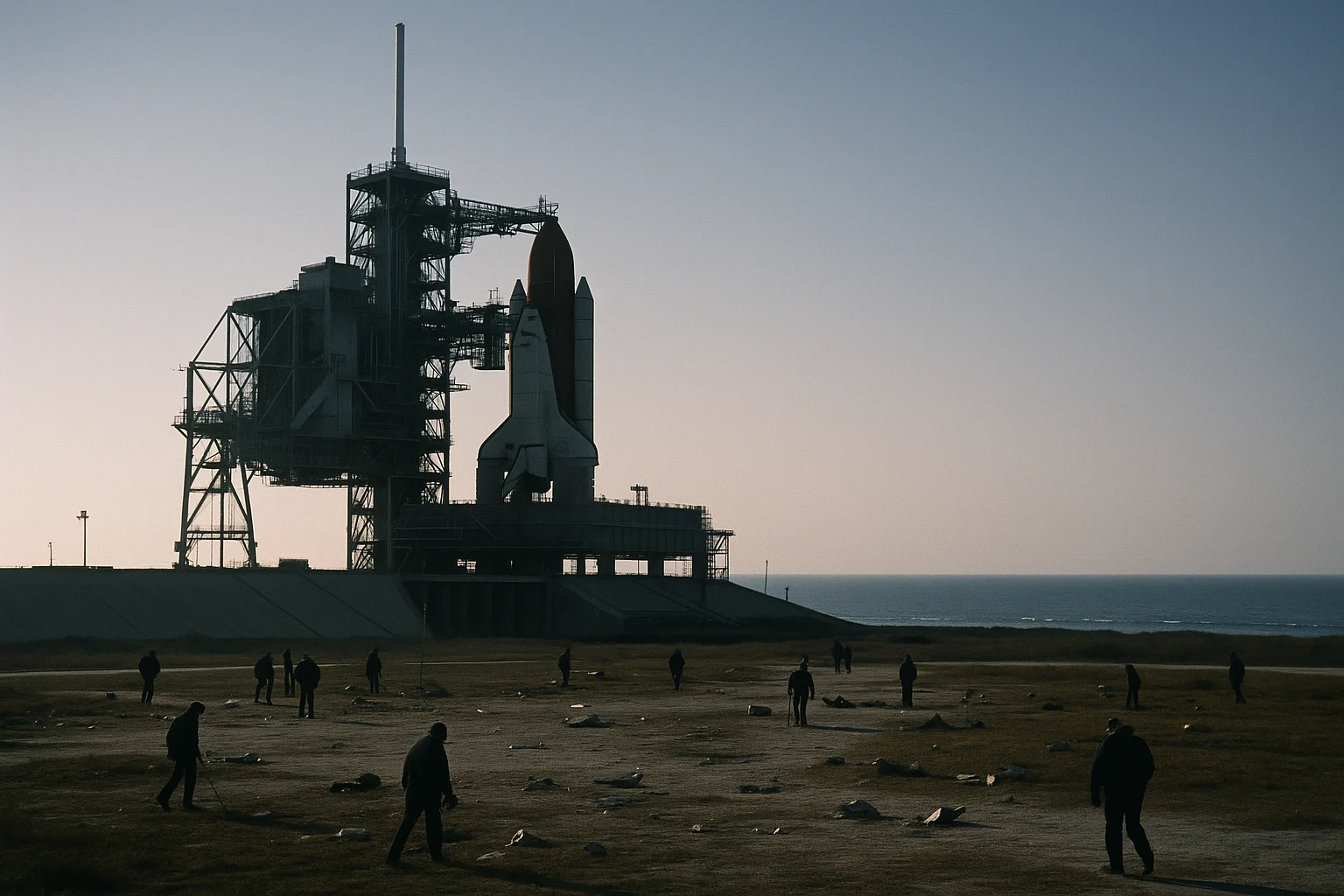
Space Shuttle Challenger Disaster
by: The Calamity Calendar Team
January 28, 1986
A Day of Promise and Tragedy
On January 28, 1986, the Kennedy Space Center's launch pad glistened under a crisp blue sky over Cape Canaveral, its emptiness betraying the historic magnitude that would unfold. The Space Shuttle Challenger stood poised for its tenth mission, capturing the hopeful gaze of spectators and the heavy anticipation of those within NASA. This was not merely another shuttle launch; it heralded the first civilian, Christa McAuliffe, a schoolteacher, venturing beyond our atmospheric bounds. Her journey represented the shared dreams of countless educators and students and was the embodiment of the space program's potential to reach beyond scientific borders.
A Ticking Clock and Tension in the Air
In the days leading up to the launch, tension brewed beneath the polished exteriors of NASA's management. The shuttle program had been designed with ambitious goals—an endless cadence of missions supporting both civilian and military aspirations. But lurking beneath the fervor of progress was a sense of unease. Engineers at Morton Thiokol, the company responsible for the shuttle's solid rocket boosters (SRBs), issued pleas that echoed warning bells. They feared the cold weather would compromise the integrity of the O-rings, critical seals that needed to remain pliant to prevent catastrophe.
Yet in the face of tighter schedules and external pressures, these warnings faded into the background. The decision was made to proceed. Such decisions, it seemed, were tethered more to a clock spiraling toward liftoff than the engineers standing with clipboards and data pointing another way.
Seconds That Changed Everything
When Challenger roared to life at 11:38 AM EST, it did so with the thunderous grace we've come to expect from spaceflight—a force of nature captured by televisions across America, classrooms and living rooms united in awe.
For the first minute, triumph reverberated as expected. Then, keen observers noticed a spectral flame flickering near the SRBs. To those familiar with the shuttle's anatomy, this was no ordinary spectacle. At T + 1:13, this flame betrayed a breach; its rapid growth spoke of doom.
Moments later, the shuttle, a symbol of humankind's reach for the stars, faltered. At around 73 seconds post-launch, Challenger succumbed to its structural failings under aerodynamic stress. High above Florida's Atlantic waters, it broke apart -- a trail of smoke and fire marking its tragic end. The lives of the seven brave souls aboard dissolved into the stratosphere, each one leaving a legacy fashioned less by their end and more by their mission.
Thanks for subscribing!
The Shockwave of Loss
The world was stunned into stillness. Seven individuals—Francis Scobee, Michael Smith, Ronald McNair, Ellison Onizuka, Judith Resnik, Gregory Jarvis, and Christa McAuliffe—were lost, never to share their stories again. The spectacle that had captivated a nation now struck with a stark reminder of its cost.
The repercussions were immediate and far-reaching. NASA's hiatus was the longest in the shuttle program's history, extending over 32 months. Beyond the raw humanity of the crew's loss, the disaster's economic toll was staggering, with a price tag exceeding $3.2 billion in 1986 dollars, and the rippling consequences stalled various satellite launches and defense projects.
Unraveling What Went Wrong
The formation of the Rogers Commission to probe into the disaster marked a commitment to understanding the failure not just technically, but institutionally. The cold, hard conclusion lay in the O-rings' vulnerability to the freezing Florida temperatures. Yet, more chilling than the cold air that morning was the organizational culture that allowed vital concerns to be overridden.
What followed was an era of introspection and change within NASA. The commission's findings spurred a wave of reforms. The redesign of the SRBs, bolstered by more rigorous safety protocols and an improved communication structure all served as a testament to hard lessons learned.
A Legacy of Reflection and Resolve
Through the crucible of tragedy, Challenger’s legacy endures as a lesson etched into aerospace history and a cautionary tale of what happens when ambition eclipses caution. The disaster’s burden has become a cornerstone of teaching in risk management and safety, a touchstone for decision-making processes in high-risk industries far beyond space travel.
As we look back on that cold January day, it's with an acknowledgment of vulnerability—an understanding that each shuttle carried not just scientific instruments, but the hopes and fears shared by all who dared dream alongside them. Challenger, and those aboard her, lead us now in another silent push: to strive for more vigilant stewardship—of safety, of morale, and of dreams.
Stay in the Loop!
Become a Calamity Insider and get exclusive Calamity Calendar updates delivered straight to your inbox.
Thanks! You're now subscribed.